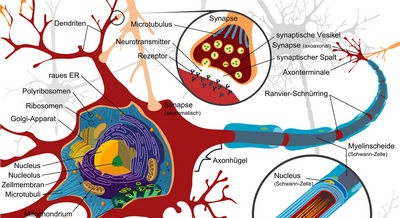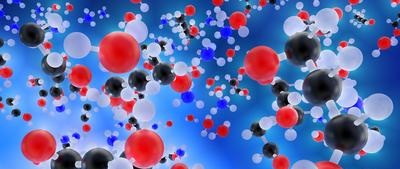Test with L-Dopa |
|
Is it possible to obtain a long-term forecast of the state of the sympathetic-adrenal system, that is, to predict a person's resistance to stress? In medicine, there are many methods that make it possible to identify factors that do not manifest themselves under normal conditions and are found as a defect in the body only in extreme conditions. Such methods, called functional tests, can be compared with the experience known to us from the course of school physics, when a load is suspended from the end of the spring, which sets it in oscillatory motion. The amplitude and frequency of vibrations are determined by the properties of the spring itself. Likewise, a living organism, brought out of balance, reacts to a situation in accordance with its capabilities. Many people are familiar with the simplest physical functional test from outpatient practice. Listening to your heart sounds can reveal a happy picture. However, after you have done a few squats, your doctor may detect some defects in your heart. More complex functional tests are performed with dosed physical activity: bicycle ergometer, step tests, etc. When studying the sympathetic-adrenal system, the so-called thermal test is used: cold (immersion of the hand in water with a temperature of + 4 ° C for 1 min) and thermal (immersion of the hand in water with a temperature of + 44 ° C for 3 min). However, to study the deep features of the sympathetic-adrenal system, pharmacological tests were required, monitoring the body's response to the introduction of certain substances into it, most often analogs or antagonists of the hormones of the sympathetic-adrenal system. Such a test is, for example, a test with ACTH (adreno-corticotropic hormone), which stimulates the secretion of corticosteroids by the adrenal cortex and, as we already know, play a role in the functioning of the sympathetic-adrenal system. A test with substances - structural analogs of adrenaline, for example, with isadrin, mezaton, etc., is also used. The most interesting test is with insulin, developed and implemented by G.N.Kassil et al. To assess the reactive and functional capabilities of the sympathetic-adrenal system. Reactive capabilities mean the speed of response (reaction) of the system to excitation. Functionality characterizes the quality of the reaction to irritation - strong, active or weak. When a small dose of insulin is introduced into a healthy body, very soon its antagonist adrenaline is released from the adrenal glands, which is designed to block unwanted invasion, and is released in doses strictly necessary for this. After 12 hours, the reaction ends, the balance of the sympathetic-adrenal system is restored. But if the same amount of insulin is administered to a hypertensive patient, in response to the invasion, instead of adrenaline, norepinephrine is released, the effect of which is 10 times weaker than the effect of adrenaline. This is how the first defect of the sympathetic-adrenal system is discovered. If the reaction does not develop immediately, but, for example, after 12 hours, the system is still fighting with the "alien", there is a second defect in the sympathetic-adrenal system, indicating the weakness of its regulatory mechanisms. When examining pilots on a special swivel chair, resistance to motion sickness correlates well with the release of adrenaline: the higher it is, the easier the subject tolerates motion sickness.This means that an insulin test may well replace complex tests on devices. A significant drawback of all the listed pharmacological tests is the complexity of their clinical explanation, and sometimes unpredictable reactions of the body. These difficulties were overcome when, instead of insulin, the so-called L-DOPA (levodopum) began to be used as a functional test - the same DOPA produced in the human body with which you are already familiar. The drug is available in tablets, washed down with water. It took a lot of effort to find the optimal dose, and it was found: 0.1 grams. Excellent informative and physiological test. Neurohormonal studies have shown that in healthy young and middle-aged people, when L-DOPA is administered, the synthesis of norepinephrine and adrenaline increased by 1.5-3 times, which indicates a balance of the sympathetic-adrenal system. But in elderly and senile people (60-85 years), the release of dopamine at the same dose of L-DOPA increased 24 times. How so? It is generally accepted that the possibilities of synthesizing DOPA in old age are sharply reduced. It looks like there is a mystery hidden here for gerontologists. By the way, let us also mention one more unexpected result. It was obtained in the study of patients with gastric ulcer and duodenal ulcer. After the introduction of L-DOPA, instead of increasing the release of catecholamines, inhibition and weakening of synthesis were observed in them. So far, experts have no consensus on this matter. Now let's see how a schizophrenic patient reacts to the test. In response to a meager dose of L-DOPA, his synthesis of dopamine and norepinephrine increases 32 times. In this case, the unused portion of L-DOPA is excreted into the urine. There are features of the sympathetic-adrenal system associated with the excessively large reserves of dopamine in the body. Our research confirms the so-called dopamine theory of schizophrenia, put forward back in the 50-60s, according to which the cause of the disease is a sharp violation of dopamine secretion. However, there is still a lot of unclear here. And yet, the method of administration of L-DOPA makes it possible to clearly diagnose the disease without confusing schizophrenia with other diseases. All other clinical methods are unable to solve this important diagnostic problem. A 22-year-old athlete turned to a neurosis clinic with complaints of obsessive fears. Examination using adrenograms revealed a deep depletion of the nervous system, expressed in the inhibition of the synthesis of norepinephrine against the background of an increased release of the "fear hormone" - adrenaline. This created the basis for the formation of acute paroxysms almost within a day, against the background of which the initial signs of cerebral circulation insufficiency appeared. The L-DOPA test revealed a specific lesion of the sympathetic-adrenal system, not characteristic of schizophrenia. Therefore, neurosis was diagnosed and appropriate treatment was prescribed, which ended in full recovery. So, the use of a test with L-DOPA allows a deeper study of the nature of the sympathetic-adrenal system, its features, and, therefore, the reserve capabilities of the body, more accurately diagnose and predict the body's readiness to withstand stress. We emphasize that both the adrenogram method and the L-DOPA test separately do not give a sufficiently complete picture, but only complement each other. And they are used only in combination with all other clinical methods for studying the state of the body. V.N.Vasiliev - Health and stress Similar publications |
| How protein structures are built | Brain and psyche |
|---|
New recipes
 Studies of the sympathetic-adrenal system in terms of daily and seasonal biorhythms provide very extensive information about the deep processes in the body. However, the method of adrenograms shows the dynamics of changes in the state of the sympathetic-adrenal system only for the period of time covered by the study.
Studies of the sympathetic-adrenal system in terms of daily and seasonal biorhythms provide very extensive information about the deep processes in the body. However, the method of adrenograms shows the dynamics of changes in the state of the sympathetic-adrenal system only for the period of time covered by the study.










